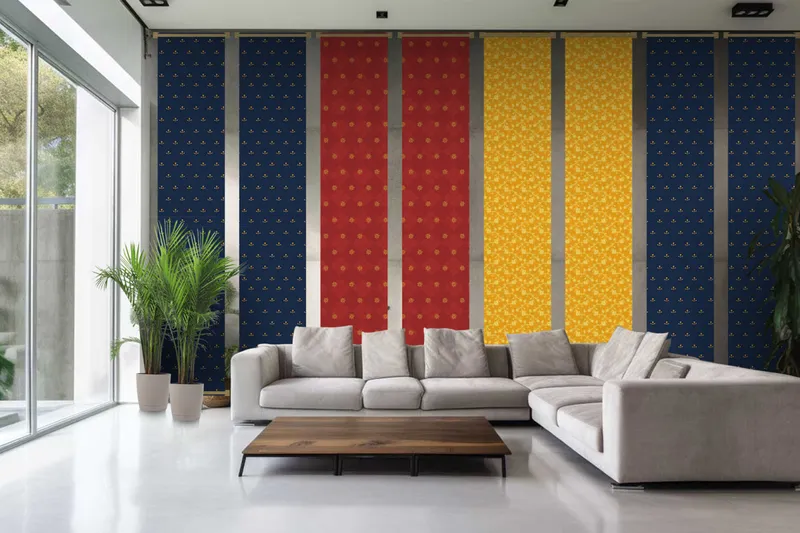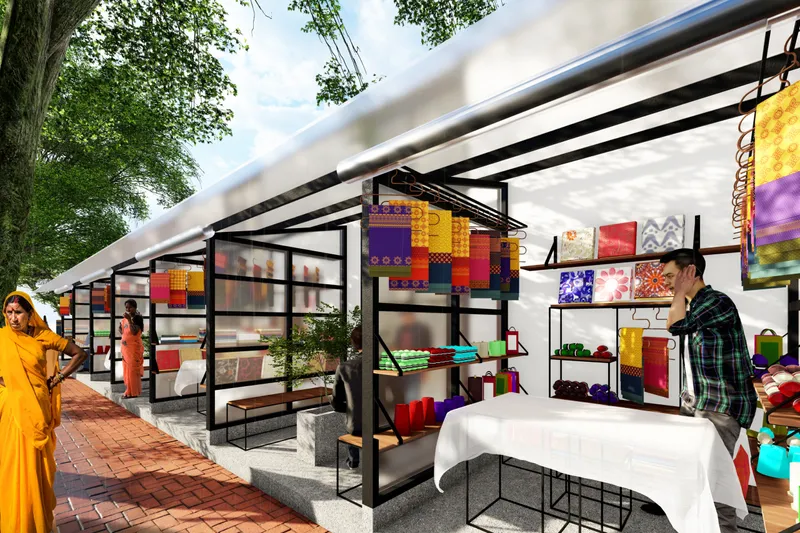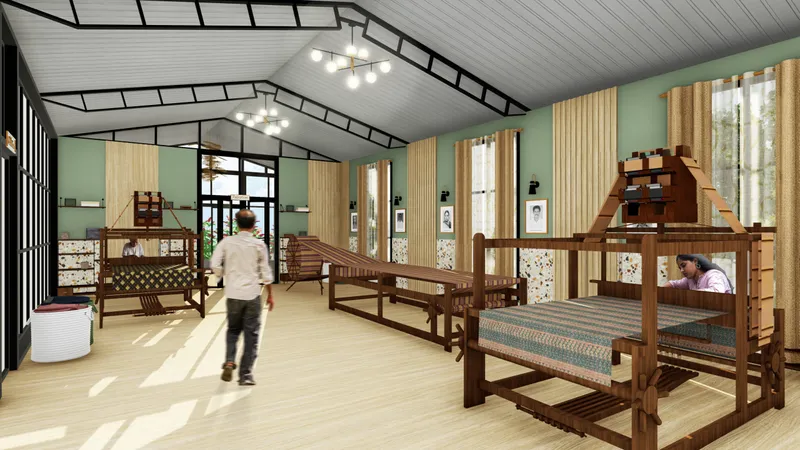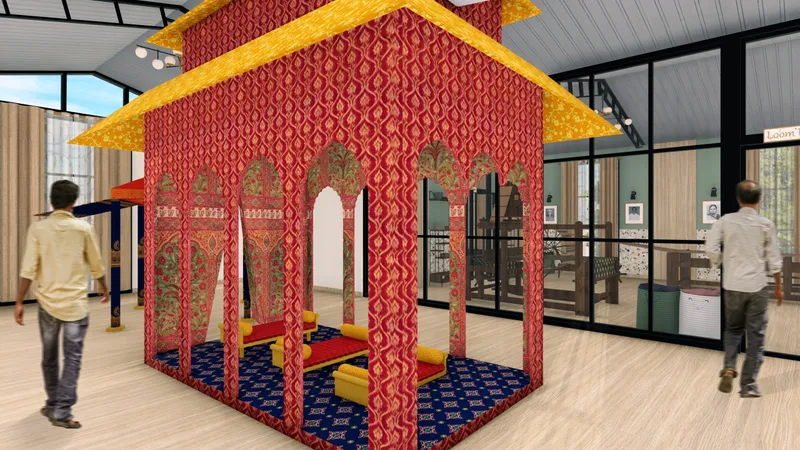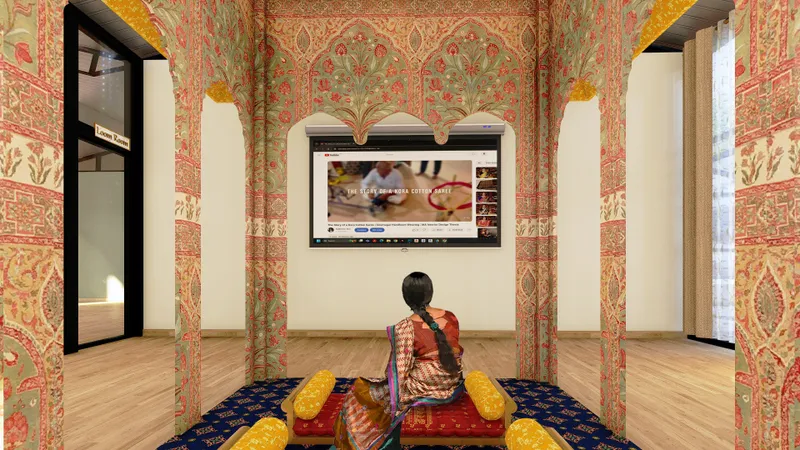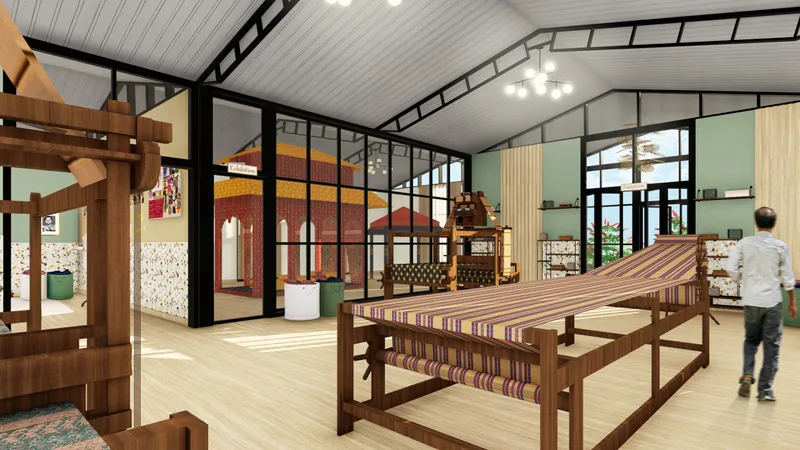For centuries, handloom weaving has been used to weave traditional outfits in India. Handwoven fabric serves as a powerful tool for storytelling and expression. The decline of traditional handloom weaving is due to low wages from middlemen and competition from mass-produced goods. Weavers tend to push their children to seek higher-paying jobs, further contributing to the decline of the art. This project aims to preserve this legacy by incorporating handwoven fabrics into modern interiors. The first element is a training and workshop facility that transfers knowledge through live project engagement under the guidance of a master weaver. The second element is an Interactive public installation that explores weaving as an architectural element, extending beyond its traditional role as a textile craft. Traditional weaving is combined with modern technology to revive and expand the practice into multidisciplinary fields, exemplified by the third element which is a fabric wall hanging used for wall paneling.
Keywords: Handloom Weaving, Culture, Tradition, Kora Cotton Silk, Knowledge Transfer, Interactive Installation, Wall paneling
This project explores the critical role of an interior designer in preserving traditional handloom weaving. Integrating this craft into modern interiors preserves a valuable cultural legacy and provides opportunities for innovation. It also paves way for future researches to think and exercise their thoughts in connecting the past with the present.
